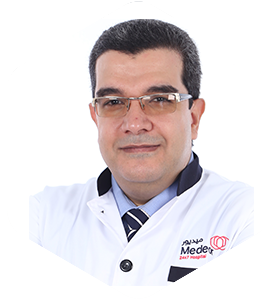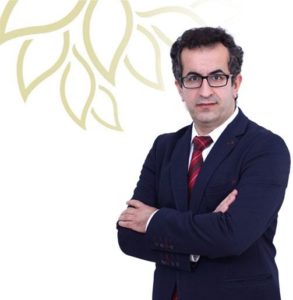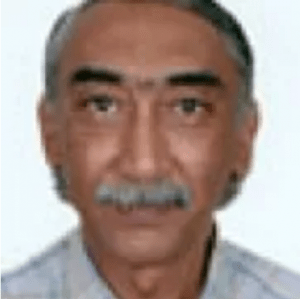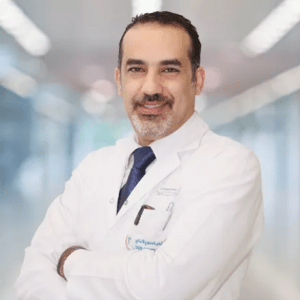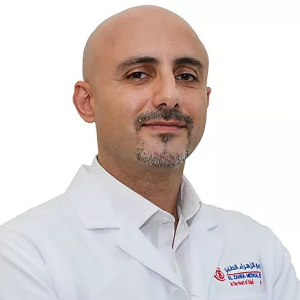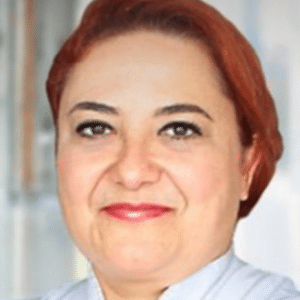Craniotomy is a surgical procedure carried out to cut a bony opening in the skull. In craniotomy, the section of the skull called a bone flap is removed to gain access to the brain underneath. Depending on the severity of the problem, a craniotomy may be small or large.
It may be performed for several reasons some of which are the treatment of brain tumors, hematomas (that is, blood clots), aneurysms, traumatic head injury, foreign objects (such as bullets), swelling of the brain, or infection. At the end of a craniotomy procedure, the bone flap is customarily replaced with tiny plates and screws.
What is craniotomy?
A craniotomy is a surgical procedure carried out with specialized tools to remove a part of the skull bone, known as the bone flap, to expose the brain. The bone flap is, however, only temporarily removed. It is immediately replaced as soon as the brain surgery has been carried out.
For efficiency, computers and imaging techniques such as magnetic resonance imaging (MRI) or computerized tomography (CT) is used alongside craniotomy procedures as a guide to be able to reach the precise location that is to be treated within the brain.
The craniotomy technique also involves the use of either a frame that is placed on the skull or a frameless system with superficially placed markers or landmarks on the scalp.
The brain scans made in conjunction with these computers and frames, help provide a three-dimensional image of what is found within the brain. Over time, it has proven to be very useful in getting clarity and making a distinction between tumor tissue and healthy tissue, and being able to reach the precise location of the abnormal tissue.
Types of craniotomy
There are several types of craniotomy, which are named after the technique used or the location of the surgery.
As mentioned earlier that craniotomy may be used carried out along with a MRI or CT scan, this type of craniotomy is what is known as stereotactic craniotomy.
For his craniotomy procedure, the surgeon uses imaging tests to create three-dimensional images of the brain. This allows for easy distinguishing between healthy and abnormal tissue.
This craniotomy technique also helps the surgeon locate the best spot for a scalp incision. With this, it becomes easier to make smaller cuts and efficiently perform minimally invasive procedures.
For the endoscopic craniotomy procedure, the surgeon makes a tiny incision in the skull, into which an endoscope, a small lighted device with a camera, is inserted. This craniotomy procedure is, however, often used with the keyhole craniotomy procedure.
As the name implies, the awake craniotomy procedure is carried out while the patient is awake. While carrying out the surgery, the surgeons ask the patients some questions while monitoring the brain activity.
A response helps them identify the parts of the brain involved in speech, movement, and vision, which are subsequently avoided while carrying out the surgery.
- Retro-Sigmoid (Keyhole) Craniotomy
The retro-sigmoid craniotomy (commonly referred to as keyhole craniotomy) is a minimally invasive surgery done to take out brain tumours. This procedure allows the skull base tumours to be removed through a small incision behind the ear, which the cerebellum and brainstem accessible. In certain cases, such as meningiomas, skull base tumours, acoustic neuromas (vestibular schwannomas), and metastatic brain tumours, neurosurgeons may use this approach
One of the key benefits of this craniotomy procedure is there’s less pain after the procedure compared to an open craniotomy. There’s also less scarring and a more rapid recovery.
- Minimally Invasive Supra-Orbital (Eyebrow) Craniotomy
Supra-orbital craniotomy (often referred to as eyebrow craniotomy) is a minimally invasive craniotomy surgery procedure performed to remove brain tumours in the front of the brain. In this craniotomy surgery procedure, a small incision is made within the eyebrow to gain access to tumours in the front part of the brain or around the pituitary gland, which is found deeper in the brain behind the nose and eyes. This craniotomy procedure is used when a tumor is either very large or close to the optic nerves or vital arteries.
The minimally invasive nature of the eyebrow craniotomy procedure makes it less painful than open craniotomy. It recovery rate is also faster than the open craniotomy procedure and causes minimal scarring.
- Orbitozygomatic craniotomy
Orbitozygomatic craniotomy surgery procedure involves the making of a small incision in the scalp behind the hairline to be able to temporarily remove the bone that forms the curve of the orbit or eye socket and cheek. The temporary removal of the bone allows the surgeons to be able to reach deeper and difficult parts of the brain while at the same time be able to reduce severe damage to the brain. This bone is later replaced at the end of surgery.
This craniotomy surgery is the craniotomy procedure opted for when the lesions are too complex for removal by minimally invasive craniotomy procedures. It is usually used in cases such as craniopharyngiomas, pituitary tumors and meningiomas.
- Translabyrinthine Craniotomy
For the translabyrinthine craniotomy surgery procedure a small cut is made into the scalp behind the ear, and subsequently removing the mastoid bone and some of the semi-circular canals which contain receptors for balance. This allows the surgeon to find and remove the tumour, or as much of it as possible without the risk of severe damage to the brain. However, the removal of the semi-circular canals results in complete hearing loss but limits the chances of injury to the facial nerve.
An extended bifrontal craniotomy surgery (or simply called an extended bifrontal craniotomy) is carried out to remove difficult tumors in the front part of the brain. It’s the preferred craniotomy surgery when the tumor is too complex for minimally invasive surgery. It is founded on the concept that it is safer to get rid of extra bone than to unnecessarily manipulate the brain.
For the extended bifrontal craniotomy surgery an incision is made in the scalp behind the front hairline to enable the removal of the bone that forms the contour of the orbits and the curve of the forehead. This allows access to the frontal part of the brain and space between and right behind the eyes without having to manipulate the brain unnecessarily. This bone is, however, replaced at the end of surgery.
Meningiomas, esthesioneuroblastomas, and malignant skull base tumors are some of the tumors treated with the extended bifrontal craniotomy procedure.
Craniotomy surgical procedure
For easier understanding the steps involved in a craniotomy surgery will be outlined:
- All clothing, jewellery, and other objects will be removed and a given a gown to wear.
- Proper positioning on the operating table in a way that provides the best access to the side of the brain to be operated upon.
- Heart rate, blood pressure, breathing, and blood oxygen level will continuously be monitored during the surgery.
- The head get shaved and the skin over the surgical spot will be cleansed with an antiseptic solution.
- An incisions will be made at location of the problem.
- The head will be held in place by a device which is removed at the end of the surgery.
- The scalp is pulled up and clipped to control bleeding while at the same time providing access to the brain.
- The bone flap will be removed and kept savely, and the dura mater gets separated from the bone and cautiously cut open to expose the brain.
- If need be, excess fluids are allowed to flow out of the brain, and microsurgical instruments, such as surgical microscope is used to magnify the area being treated. This enables the surgeon to get a better view of the brain structures and be able to distinguish between abnormal tissue and healthy tissue.
- A drain device or a special type of monitor is placed in the brain tissue to measure the intracranial pressure [a pressure created by the brain tissue, cerebral spinal fluid, and blood supply inside the closed skull] inside the skull.
- Upon the completion of a craniotomy surgery, the surgeon sutures (sew) the layers of the tissue together.
- The bone flap will then be reattached using plates, sutures, or wires.
- In the case of a tumour or an infection being found in the bone, or a decompression (to reduce pressure in the brain) is required, the flap may not be replaced.
- The incision made will then be closed with sutures or surgical staples, and a sterile bandage or dressing will be applied over it.
Self-help tips for recovery and life after craniotomy
- Having good rest and getting enough sleep will help you recover.
- Avoid lying flat when you rest or sleep. And if you have to raise your head up after lying down do that slowly and gently. This can help prevent unnecessary headaches or dizziness.
- Ensure you take a walk every day. For every day, walk more than the previous day
- Avoid heavy lifting. Talk to your doctor about this.
- Avoid driving for 2 to 3 weeks or until your doctor gives the go.
FAQ
What will happen to my hair during a craniotomy surgery?
Ordinarily, only a small area of your head will be shaved and after the craniotomy surgery, your hair will grow back as usual where it has been shaved.
What is a craniotomy?
A simple craniotomy definition is an operation in which a piece of the skull is removed to treat a brain problem.
What are the side effects of a craniotomy?
Just like any surgical procedure, there are a couple of complications that may occur during or after a craniotomy surgery. The risk is tied to the location of the surgery. However, general complications include infection, bleeding, blood clots, pneumonia (an infection of the lungs), an unstable blood pressure, seizures, fatigue, muscle weakness, brain swelling and leakage of the cerebrospinal fluid.
Other complications that may occur include memory problems, coma, difficulty with speech, abnormal balance or coordination and paralysis.
How painful is a craniotomy?
Pain experienced as a result of craniotomy surgery is moderate to severe in about 90% of patients within several days after the procedure. There are, however, chances of developing chronic headache later on in some patients.
What is craniotomy used for?
A craniotomy can be carried out for several reasons such as to remove a brain tumour or an abnormal brain tissue; to get rid of blood or blood clots from the brain; to relieve the pressure accumulated in the brain after an injury or a stroke incident; to repair a brain aneurysm (this is a bulge in a blood vessel wall); to repair skull fractures; and to treat several other brain conditions.
It should be noted that the piece of skull that is removed during the craniotomy procedure is always put back in place after the brain problem has been treated.
How long does recover from a craniotomy surgery take?
Thus depends on the type of craniotomy surgery carried out. It may take several days to several weeks for full recovery. However, life after craniotomy is not so bad.
However, instructions will be given by the surgeon to help boost recovery. It is advisable that these instructions be judiciously stuck to.
How long does will I have to wait to get my craniotomy results?
There is no specified period of time. It all depends on the underlying conditions being treated.

